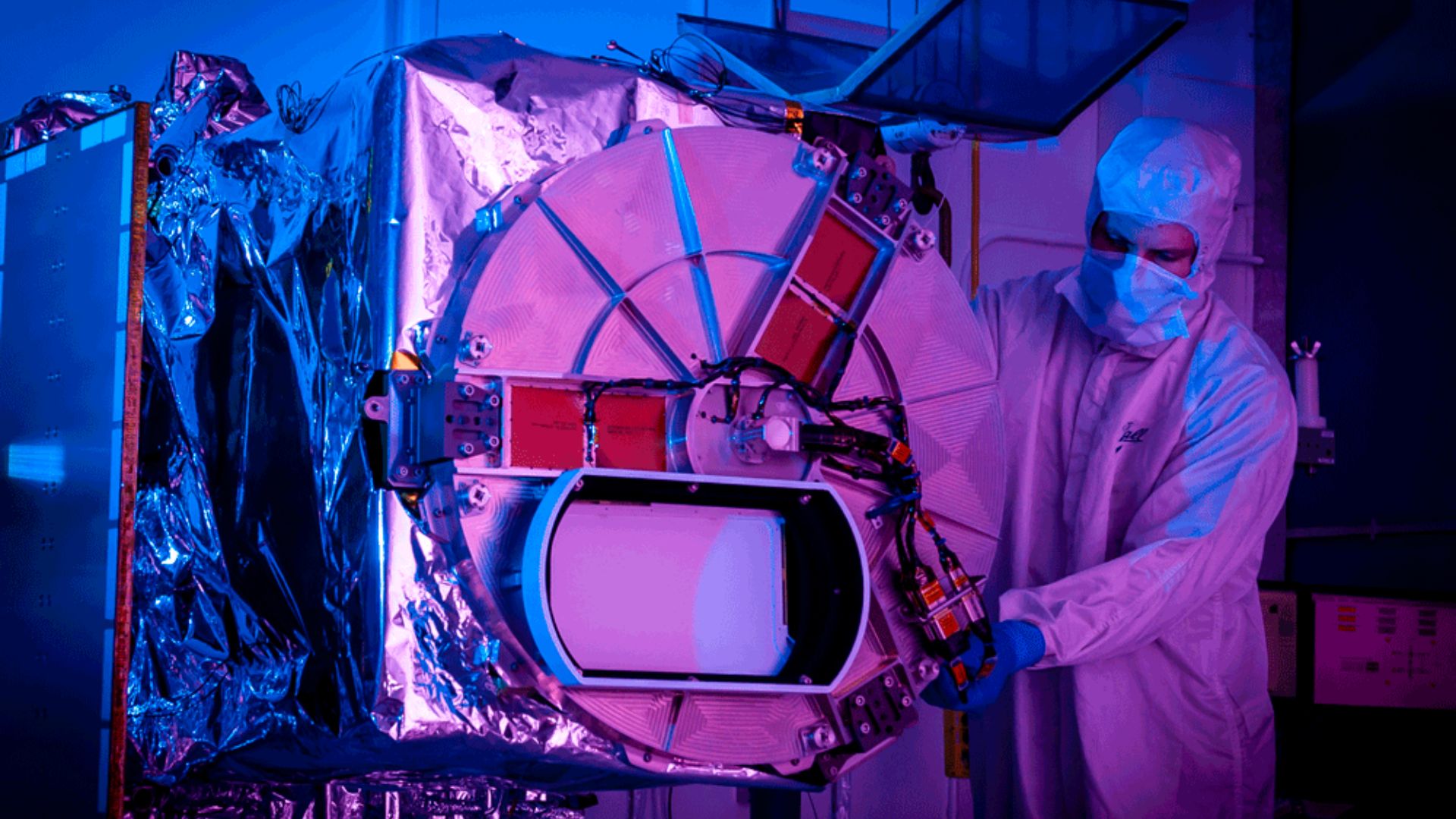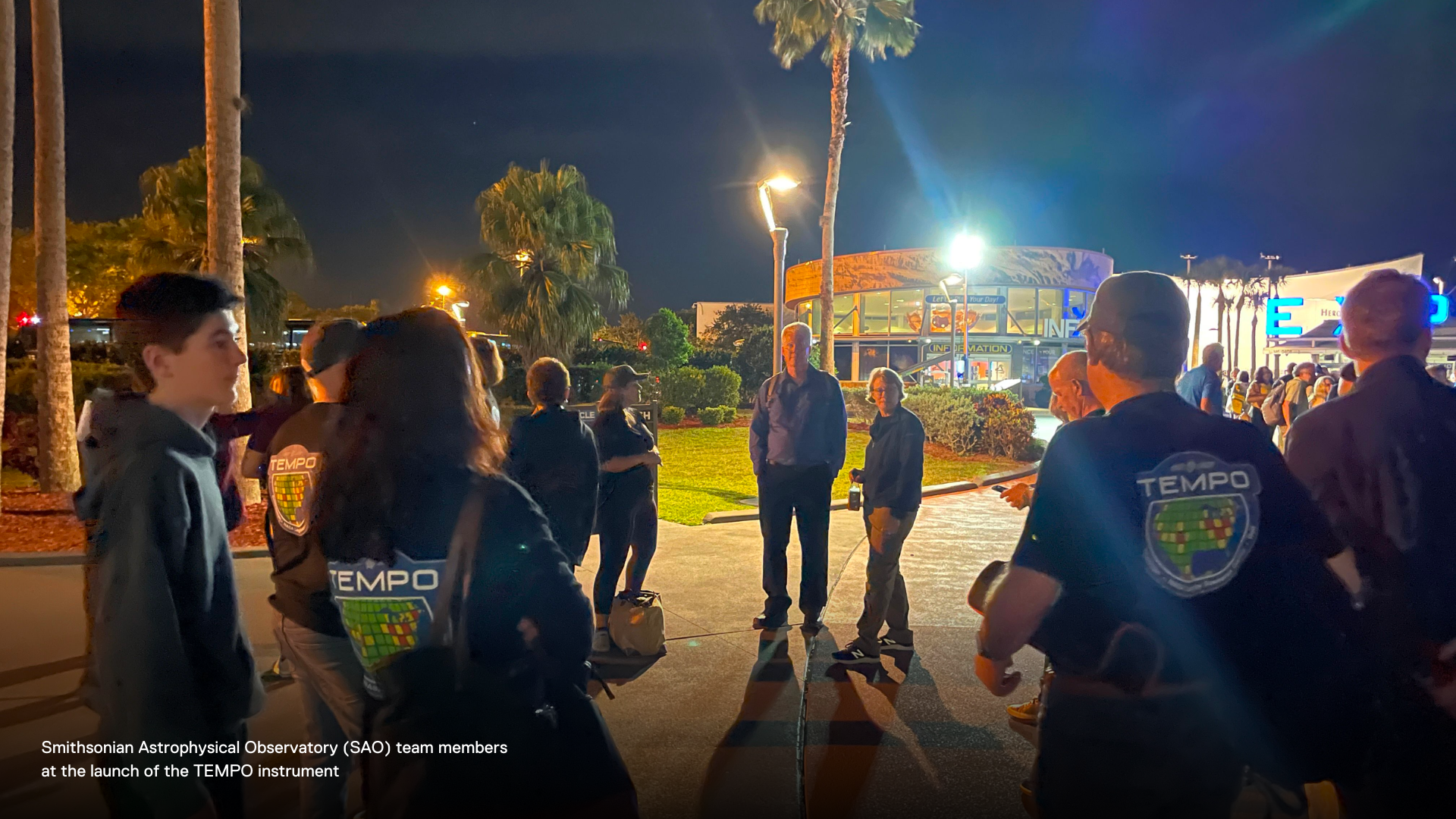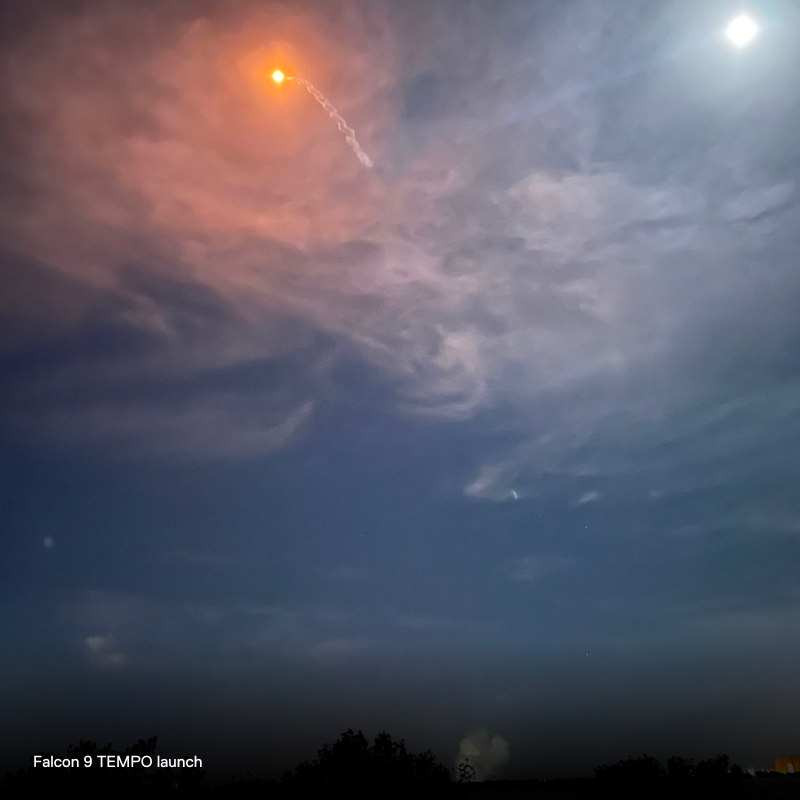
At 12:30 a.m. on Friday, April 7, the TEMPO (Tropospheric Emissions Monitoring of Pollution – TEMPO Mission Overview) instrument blasted off into space on the back of a commercial satellite. Both were launched in a Falcon 9 Space X rocket from Cape Canaveral. I joined the team as a guest of the Smithsonian Astrophysical Observatory (SAO) at The Center for Astrophysics | Harvard & Smithsonian to see the launch from Kennedy Space Center, and it was an unforgettable experience.
TEMPO and the commercial satellite it piggybacks on will settle into geostationary orbit over North America. It will join similar instruments in geostationary orbit over Europe and Asia. Being in geostationary orbit means the satellites move at the same speed and in the same direction as Earth rotates. All three of these will monitor air quality and pollution hourly at about 10 km spatial resolution. This near-real-time air quality data will be used to improve air quality forecasting and to better understand the way pollutants travel across the globe. One of the great things about TEMPO is that the data will be freely available to the public for use in scientific research and citizen science projects.

It was an excellent evening for a launch, which went off without a hitch at the very opening of the launch window. Many scientists involved in the TEMPO instrument and related teams were invited to view the launch. We met at Kennedy Visitor Center around 11:00 p.m. and were taken by bus to the Banana Creek Launch Viewing Area. The rocket launched from Launch Complex 49, viewable across the water.


The following morning after a little sleep and a lot of coffee, we reconvened in our hotel lobby to review the first telemetry data from the spacecraft. The first thing after a mission is launched is to make sure the satellite is healthy, meaning that all its parts are working and the satellite itself is in the proper orbit. The TEMPO instrument won’t be turned on until after Memorial Day to allow the communications satellite it is traveling on to become fully operational. This time also allows for the instrument to heat up and evaporate any residual gases from the launch before opening its shutter for the first test images. After the first few months, the data will be made available to scientists and the public. It will certainly be exciting to see what TEMPO discovers!